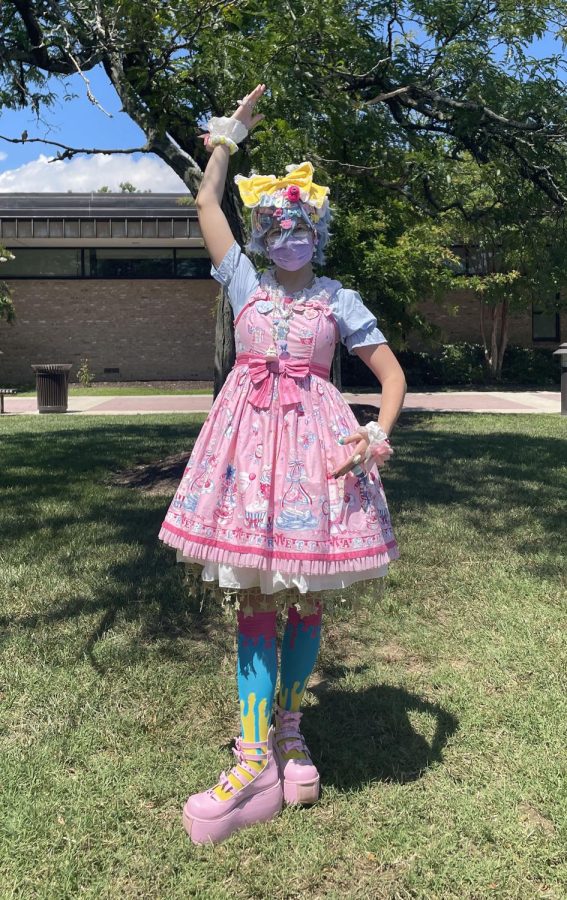Former student explains style
Former student Annie Fowler dresses in Japanese anime-inspired outfits.
August 29, 2022
Annie Fowler walked into the Campus Current newsroom in August dressed in a frilly pink dress with puffy blue sleeves and a matching blue wig adorned with a Hello Kitty charm and lots of bows and barrettes. A bright yellow bow sat atop Fowler’s head.
The newsroom staff stared. That’s what everyone does when Fowler walks into a room, the former AACC student said.
“It’s interesting because people will stare at you and it’ll be a little weird,” said Fowler, who transferred to University of Maryland, Baltimore County this semester.
Fowler’s style is called “Lolita fashion” and derives from a Japanese subculture whose members wear clothing characterized by cute aesthetics, Victorian-influenced designs and bell-shaped petticoats.
“That’s a spoof of Alice in Wonderland,” said Fowler, who described the unique look as “freeing.”
Fowler, 21, wears the colorful wardrobe to school and sometimes dressed up for work at Home Depot.
“It’s really about, you know, asserting that you’re not going to be like everyone else, and it’s OK,” Fowler said. “It’s liberating to … have the boundary of social norms be broken down by dressing differently.”
Fowler explained the origin of the fashion.
“This style came about as part of the women’s revolution in the ’70s in Japan,” Fowler said.
Fowler explained that, despite the term’s origin in Vladimir Nabokov’s novel “Lolita,” the style is not inherently sexual. Nabokov’s novel is about the relationship between a 12-year-old girl and a grown man.
“Some people think that it’s a sex thing,” Fowler said. “And in my opinion, if you think this is sexual, that is a you problem. … They’ll just look at a person dressed like Alice in Wonderland and think, like, ‘Oh, you’re a whore.’ It’s very, very curious. But I think that is just kind of like the conservative idea of seeing something different. Associating difference with evilness, and you know, what’s something that’s evil in conservative ideas? There’s the devil and then there’s sex.”
Fowler’s interest in Lolita fashion began with Japanese animation and a fascination with an online music subculture called Nightcore.
“Nightcore is sped up, you know, pop songs, and usually they have anime thumbnails,” Fowler said. “And it’s not always like strictly from anime that exists; sometimes it’s just art in an anime style. And I was obsessed with the drawings that had 8 million frills and huge head bows. And I would draw that.”
Living at home and working at Home Depot during the pandemic allowed Fowler to save money to invest in a Lolita-inspired wardrobe.
“I find out that it’s something that I’m capable of wearing and … I have money,” Fowler said. “I’m living in the pandemic at my parents’ house working a job that I hate. So I buy myself a cute dress and I decide to wear it to school when I finally go back to school.”
Fowler eventually began to wear more Lolita fashion outside.










